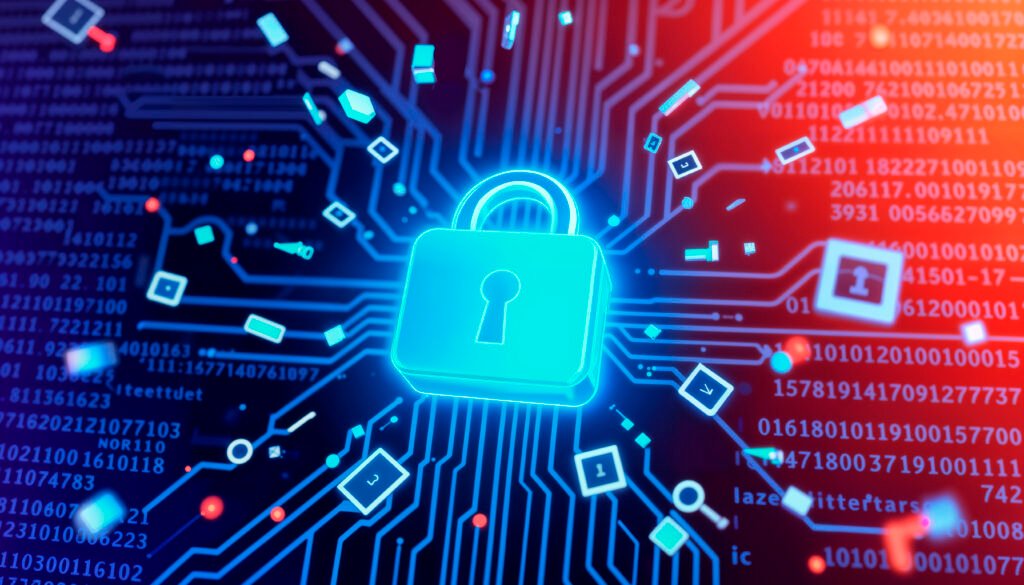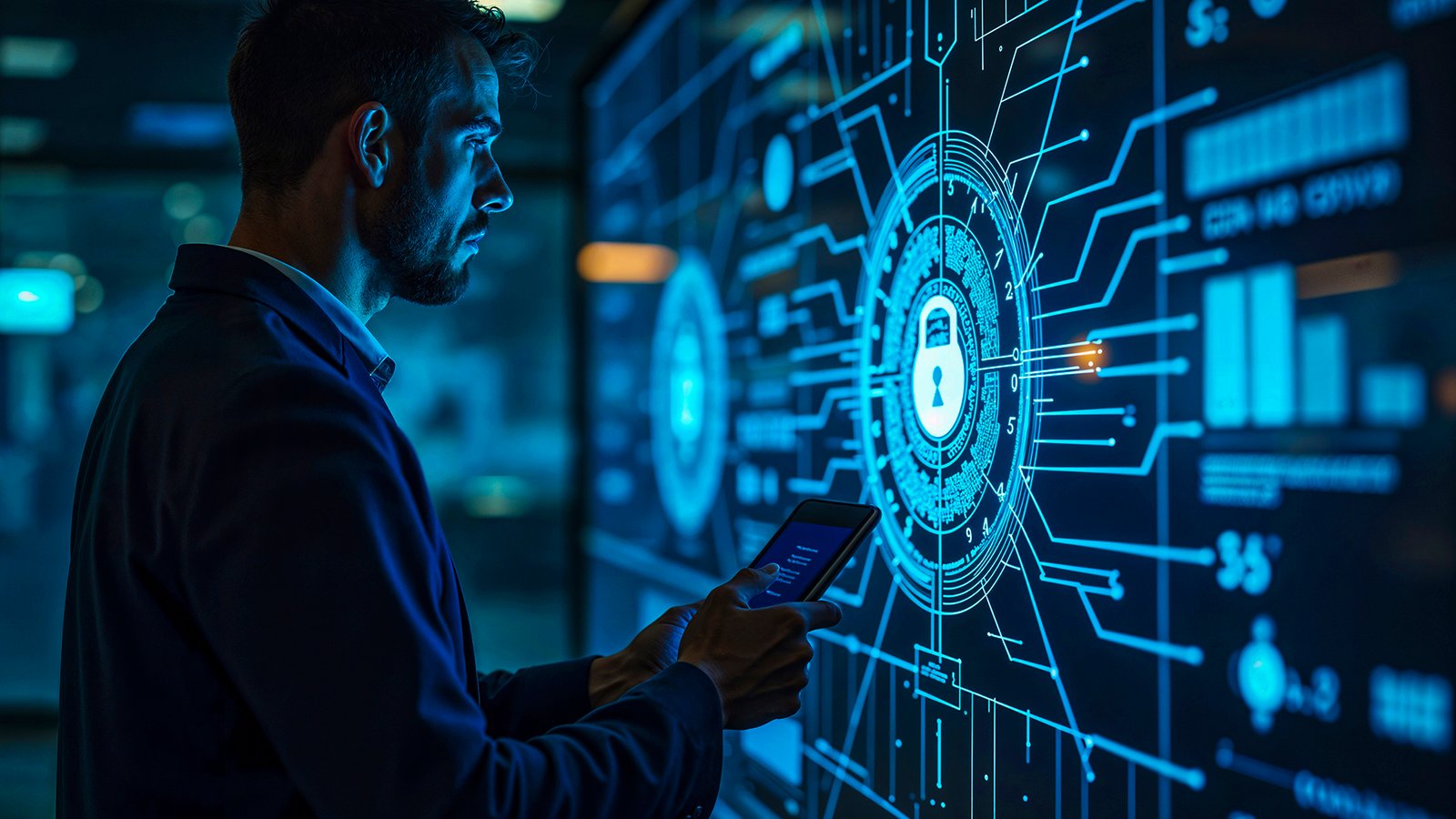Introduction
Cybersecurity has turned into a foundation of the computerized time, as dangers develop quicker than at any other time. In 2025, people and organizations the same face new difficulties in defending their web-based presence. With expanded dependence on innovation, getting individual and touchy information is as of now not discretionary — it’s objective. This guide offers fundamental online protection tips for 2025 to keep you one stride in front of cybercriminals.
Understanding the Significance of Network protection in 2025
With the quick progression of innovation, network safety stays basic for safeguarding advanced biological systems.
Why Cybersecurity Matters
The advanced change has brought comforts yet additionally gambles. Programmers exploit weaknesses in organizations, frameworks, and, surprisingly, human way of behaving. From data fraud to ransomware assaults, a lot is on the line.
| Threat | Impact |
|---|---|
| Identity Theft | Personal and financial information misuse. |
| Ransomware | Systems locked until a ransom is paid. |
| Data Breaches | Sensitive data leaked, causing reputational and financial harm. |
Changing into 2025, these dangers develop more refined, requiring proactive measures.
Top Cybersecurity Tips for 2025
Embracing a multifaceted methodology is fundamental for remaining secure.
1. Use Strong, Unique Passwords
Passwords remain the first line of defense against unauthorized access.
- Utilize a mix of letters, numbers, and images.
- Try not to reuse passwords across various stages.
- Think about utilizing secret word administrators to store and produce complex passwords.
2. Enable Two-Factor Authentication (2FA)
Adding an extra layer of protection makes accounts significantly harder to compromise.
- Join passwords with biometric check or a one-time code.
- Focus on 2FA for email, banking, and virtual entertainment accounts.
3. Update Your Software Regularly

Outdated software is a breeding ground for vulnerabilities.
- Empower programmed refreshes on your gadgets.
- Guarantee antivirus programs are exceptional.
| Tip | Why It’s Important |
|---|---|
| Strong Passwords | Prevents brute force attacks. |
| Two-Factor Authentication | Adds an additional layer of security. |
| Regular Updates | Patches security vulnerabilities in applications. |
Protecting Personal Devices
As work-from-home patterns continue, individual gadgets are an objective for cybercriminals.
1. Secure Wi-Fi Networks
Unsecured networks are an entry point for attackers.
- Change default switch passwords.
- Use WPA3 encryption for improved security.
- Try not to involve public Wi-Fi for delicate exchanges.
2. Install Reliable Security Software
Antivirus and anti-malware software defend against various cyber threats.
- Pick programming from confided in suppliers.
- Perform ordinary sweeps to distinguish vindictive exercises.
3. Monitor Your IoT Devices
Internet of Things (IoT) devices like smart speakers and thermostats can be exploited.
- Change default certifications.
- Handicap superfluous elements.
Securing Businesses in 2025
Cybersecurity reaches out past people; organizations are practical objectives for cyberattacks.
1. Conduct Regular Security Audits
Routine assessments uncover vulnerabilities.
- Test firewalls, servers, and endpoints for shortcomings.
- Foster an occurrence reaction plan in light of review results.
2. Train Employees on Cybersecurity Best Practices
Human error is a common cause of data breaches.
- Lead phishing recreations.
- Teach workers on perceiving dubious connections and connections.
3. Leverage Advanced Technologies
Artificial intelligence (AI) and machine learning (ML) bolster cybersecurity.
- Artificial intelligence controlled frameworks identify abnormalities progressively.
- ML models anticipate and forestall likely dangers.
| Business Strategy | Impact |
|---|---|
| Security Audits | Identifies system weaknesses for proactive measures. |
| Employee Training | Reduces human errors and susceptibility to phishing. |
| Advanced Technologies | Enhances threat detection and mitigation capabilities. |
Comparison Table: Cybersecurity Best Practices (2025 vs. 2020)
| Practice | 2020 Approach | 2025 Evolution |
|---|---|---|
| Password Management | Simple passwords and manual tracking. | Password managers and AI-generated credentials. |
| Threat Detection | Signature-based antivirus software. | AI-driven predictive analytics. |
| IoT Security | Minimal focus on IoT devices. | Comprehensive IoT monitoring and protection. |
Future Trends in Cybersecurity for 2025
The scene of cybersecurity is set to change further, with recent fads arising.
1. Zero Trust Architecture
This principle requires verification of every access request.
- No understood trust conceded to any client or gadget.
- Improves security by continually approving authorizations.
2. Quantum-Resistant Encryption
With quantum computing on the rise, current encryption methods may become obsolete.
- Quantum-safe calculations are a work in progress.
- Future-sealing frameworks guarantees long haul information security.
3. Blockchain for Security
Blockchain technology ensures transparency and tamper-proof transactions.
- Decentralized frameworks diminish weak links.
- Ideal for getting monetary and medical services information.
| Trend | Description |
|---|---|
| Zero Trust Architecture | Verifies every access request without implicit trust. |
| Quantum-Resistant Encryption | Protects data from quantum computer attacks. |
| Blockchain Security | Utilizes decentralized networks for secure transactions. |
Notes on Cybersecurity Practices
- Prioritize Awareness: Remaining informed about advancing dangers is basic.
- Adopt Proactive Measures: Preventive activities are more successful than receptive reactions.
- Integrate Technology: Influence progressed apparatuses to improve network protection techniques.
Conclusion
As digital dangers fill in intricacy, remaining on top of things requires perseverance and flexibility. By executing the fundamental online protection tips framed here, people and organizations can shield their advanced resources in 2025 and then some.
The computerized world might be full of dangers, yet with powerful techniques and a ground breaking approach, we can open the maximum capacity of innovation while guaranteeing security and protection. An opportunity to act is currently — safeguard your computerized world and embrace a protected future.

